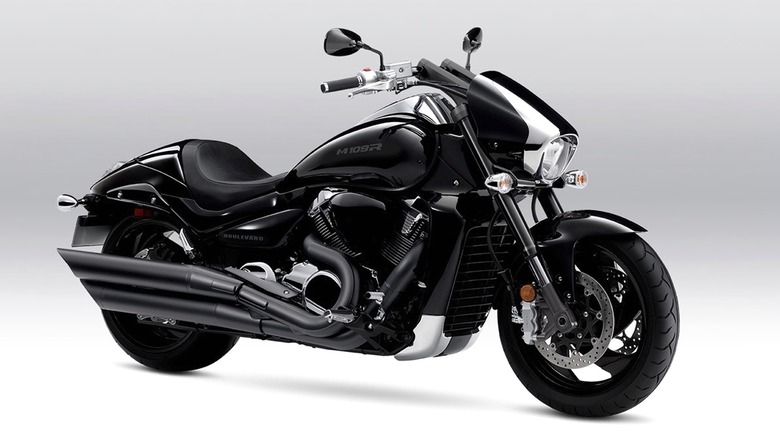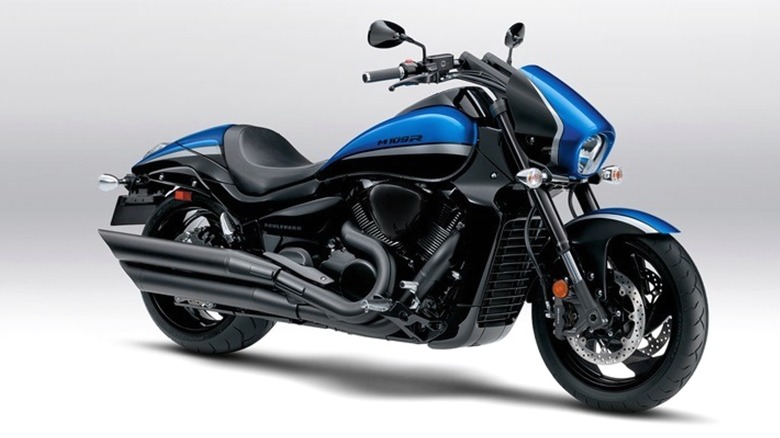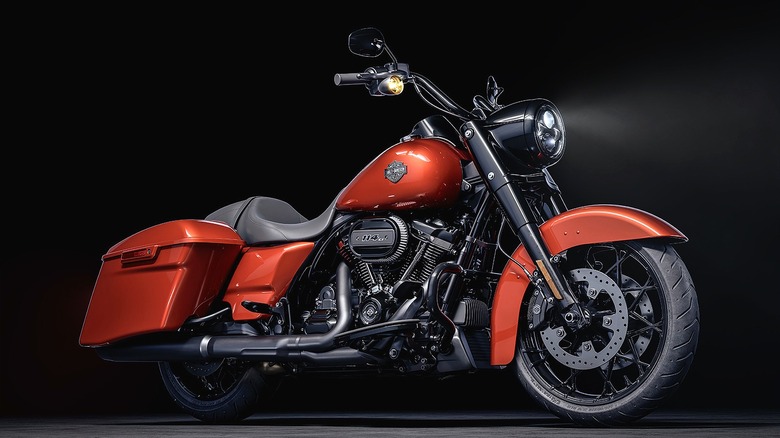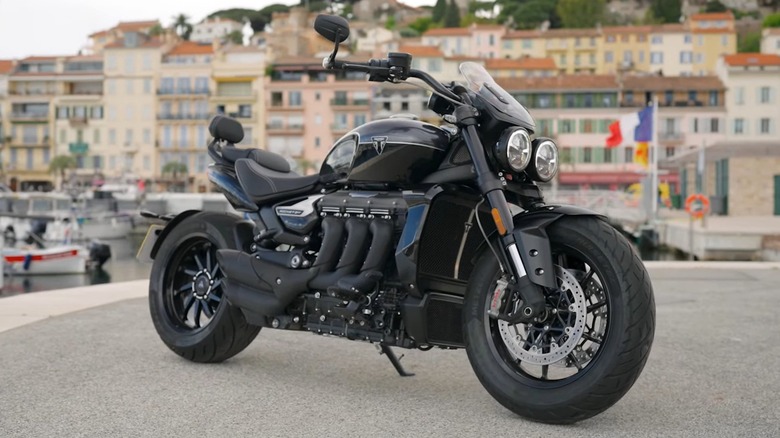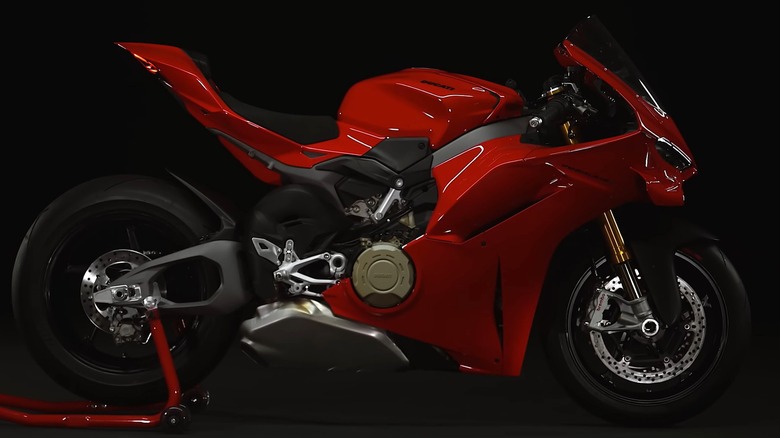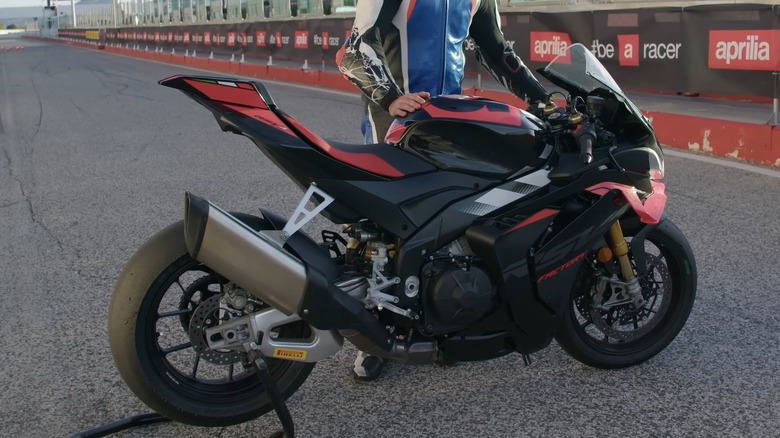5 More Motorcycles With Notoriously High Maintenance Costs
When the first part of this list was released, it surprised many how quickly certain motorcycles could deplete a maintenance budget. And honestly, that reaction made sense. Most riders will fall in love with a machine just because of how it looks, sounds, or the way it pulls when you open the throttle. What often gets overlooked is the long road that comes after the first few thousand miles, with the part where service schedules, labor hours, valve checks, and specialty parts begin to shape the true cost of ownership. That's exactly why this follow-up exists.
The motorcycles in this batch aren't bad machines — Far from it. Most of them are engineering showcases that deliver the kind of performance and personality that riders obsess over. But that same engineering comes with strings attached. Larger displacements push fluids and components harder. High-revving engines demand tighter tolerances. While complex electronics need specialized tools just to diagnose them. Depending on the brand, even "routine" services can drift into premium territory long before you get near a major interval.
To keep things grounded, the cost figures here were obtained directly from riders who shared their actual bills in online owner forums, along with comparisons from the brands' recommended service schedules. That way, you're seeing numbers from the people who actually paid them, not just estimates pulled from brochures. So here's the next set of bikes that fans love, but will ask a lot from your budget than you might expect.
Suzuki Boulevard M109R
When you dig into the upkeep of the Suzuki Boulevard M109R, you start to see why riders call it a beast and also budget trap. The bike runs on a 1783cc liquid-cooled V-twin with dual cams and eight valves, which produces about 123 horsepowerand 118 lb-ft of torque at around 4,000rpm, all running through a five-speed setup and a shaft drive. Once you start living with it, the real picture comes from the check-ups, the big invoices, which depends on how you actually ride the thing.
Those wide 130/70R-18 and 240/40R-18 tires melt fast under hard throttle, and replacing both plus mounting can creep toward $500. And once the one-year warranty fades out, you'll feel the difference between overpriced bits and strangely affordable ones. Most riders get tips from other M109R owners on how they track down cheap parts and also, eventually learn enough DIY to keep the basics under control.
If you take it easy on the bike, early maintenance can be very straightforward. Fresh oil every 3,500 miles, a look at the plugs, valve-clearance checks every 14,500 miles, and a quick scan for leaks usually keep it settled. Riders argue over cheap filters versus pricier synthetics, but coolant swaps are easy since Honda's own works fine as an alternative. For the shaft drive, common gear oils like Mobil 1 75W-90 can fly, so nothing exotic there.
Harley-Davidson Road King
If you've ever thought about adding a Harley-Davidson Road King to your garage, this means you already know why it stands out. The bike is a good buy when used and with a Milwaukee-Eight 114 engine, it has that torque needed for long-distance riding. However, any long-time Harley owner will tell you the real conversation begins when you look at the service costs.
A simple oil change with Syn3 and a chrome filter already sits near the $140 mark, and you'll hit your first real service within the first few hundred miles. From there, the schedule just gets tighter: past 1,000 miles, then 2,500 miles, 10,000 miles, or twice in a year if the bike spends more time parked. None of these visits are cheap. According to Vikingbags, the 1,000-mile service alone can land close to $450 for any touring Harley-Davidson, while bigger 20,000-mile inspections can push towards $600 even before adding parts or repairs.
Brake fluid and coolant flushes can run about $125 and $115, and tire installation usually goes for $110 up front and $165 at the rear, without even counting the cost of the tires themselves. A basic diagnostic check can cost up to $110 in labor, and a full-body bath can reach around $220. Still, all of this, for a bike that already carries a price tag as low as $24,999. Add in two-up riding, heavy luggage, or consistently hard use, and it's possible to end up with a $ 16,000 annual maintenance bill.
Triumph Rocket 3
Everything about the Rocket 3 feels special, especially its heart, a 2,500 cc inline-three that stands as one of the largest motorcycle engines in history. It's water-cooled, runs dual overhead cams, and builds torque low in the revs before charging toward its 165 horsepower peak at about 163 lb-ft for the R model. All of that feeds through a six-speed gearbox and a shaft-driven bevel box that is very expensive to maintain.
One owner was billed around $495 for that visit alone, and others chimed in with similar numbers for follow-ups that came in near $454. This is a reason why some riders eventually jump to locals, claiming Triumph dealer labor runs about 40% higher without knowing that any Triumph bike can hover between $200 to $600 a year on maintenance when everything goes smoothly. It could skyrocket to even $3,000, when you factor in big displacements, inflation, and skipped intervals, especially after warranties expire.
If you own one, Triumph expects you to maintain a regular maintenance ritual, which can help reduce expenses. It stretches from daily once-overs like checking oil level, tire pressure, and electronics to longer gaps where the major work happens. Those major services can show up every 10,000 miles, then again at 30,000, and that involves valve inspections, throttle-body cleaning, and a fuel-system check you don't want to ignore. Brake fluid is on a fixed two-year clock, and Coolant gets swapped out every three years, whether you hit the mileage or not.
Ducati Panigale V4
Before you ever look at a service sheet, the Panigale V4 already makes it clear it was built with intentions that go way beyond street-legal cruising. Power sits around 209 horsepower from a 1,103 cc liquid-cooled Desmosedici Stradale V4 and a counter-rotating crankshaft which helps in shaping the bike's signature feel. And with a starting price of $26,995, it's obvious that you're dealing with one of Ducati's premium machines long before upkeep even comes into play.
That's when the owner experience shifts into the rhythm Ducati expects you to follow. Oil services land roughly every 7,500 miles, while the bigger desmodromic valve check doesn't arrive until around 15,000 miles, yet Ducati still expects an annual service regardless of mileage. The brand's two-year, unlimited-mileage warranty helps early on, but most owners discover that the real cost lives in the labor rates, and not the parts
In a forum, a rider shared a $447 quote from their dealer for their first Panigale V4 service, only for others to jump in with numbers climbing higher. Someone else mentioned a bill landing somewhere in the mid-$300 range, another paid $406 for the same early visit, and one rider claimed that theirs came out at $350. In another conversation, a separate breakdown showed 1.6 hours of labor billed at $125 an hour before parts even entered the picture. Although a single commenter escaped with $288.14, the thread made it clear that most V4 owners see early-service costs drifting into the $400–$500 zone.
Aprilia RSV4
Sitting as one of the top bikes in Aprilia's lineup is the Aprilia RSV4 and there is a very good reason for that. It is the brand's purest superbike, especially the RSV4 1100 which as a 1,099 cc V4 that pushes around 220 horsepower. With that kind of power, it is also one of the most powerful machines this year alone, yet owning one means you have to get familiar with the price of keeping all of that performance in check. Some riders mentioned their first dealership visit hovered around $350, which initially made a few believe the "Italian premium" might be exaggerated. Once the larger intervals arrived, the tone across forums changed.
One Austrian owner shared that their 20,000-mile service came out to about $17 after adding a valve-clearance check, brake pads, and a chain job — all of which obviously took significant time and specific tools to carry out. Another rider said their shop logged nearly 10 hours of labor for the same milestone, totaling around $460–$490 before adding parts. On any Aprilia, even the simplest things aren't always that simple. A basic oil change, even when done at home, can still cost around $300 once you factor in the cost of quality oil and a filter, while a standalone valve adjustment on most Aprilia models often exceeds $800, depending on the bike. All of these still lines up with the yearly cost of maintenance for any Aprilia which often settles somewhere between $300 and $700-plus.
Methodology
This follow-up builds on the original piece, expanding the list with five more motorcycles that bring equally heavy maintenance bills but without repeating any models previously covered. Each bike here earned its place through a mix of manufacturer service schedules, owner reports, dealership maintenance menus, and data from sources such as BikeSocial, Motorcycle News, Cycle World, and dedicated rider forums. That consistently points to higher-than-average upkeep costs.
To keep the evaluation grounded, the research focused on several core areas: factory-recommended intervals, valve-service timetables, labor-hour estimates, and the cost of consumables like fluids, filters, and tires. Complex engines, tight tolerances, high-revving layouts, and advanced electronics were treated as major cost drivers because they often require specialized tools, dealer-only diagnostics, or extended teardown time. Parts availability and model-specific quirks were also factored in, particularly for bikes where owners frequently reported long shop delays or premium pricing for branded components.
Forum discussions played a crucial role, too. They offered insight into what riders actually pay once the bike leaves the showroom, highlighting unexpected labor spikes, first-service surprises, and the difference between dealership and independent-shop pricing. All of these have helped shape the list, focusing on how often these bikes need attention and how expensive that attention tends to be.
